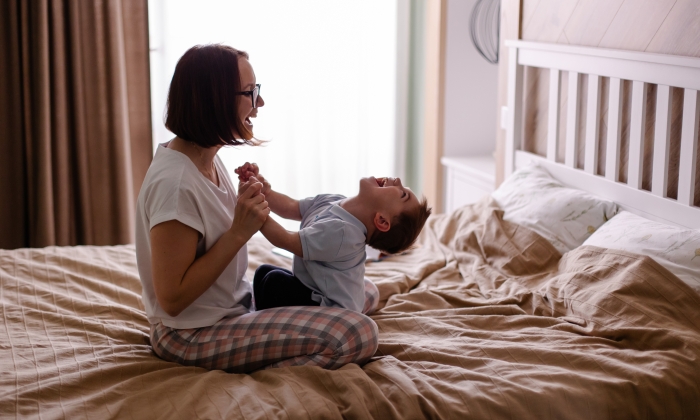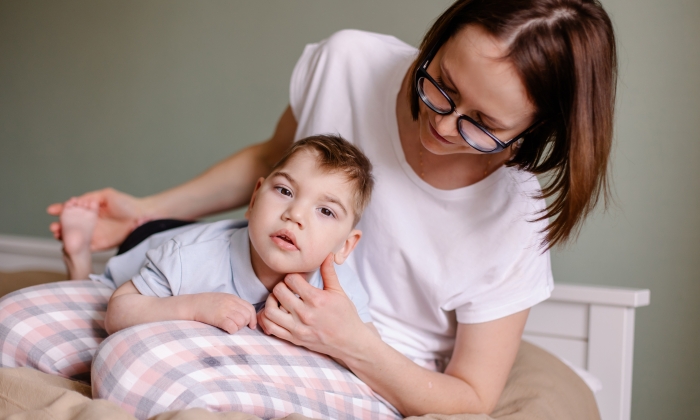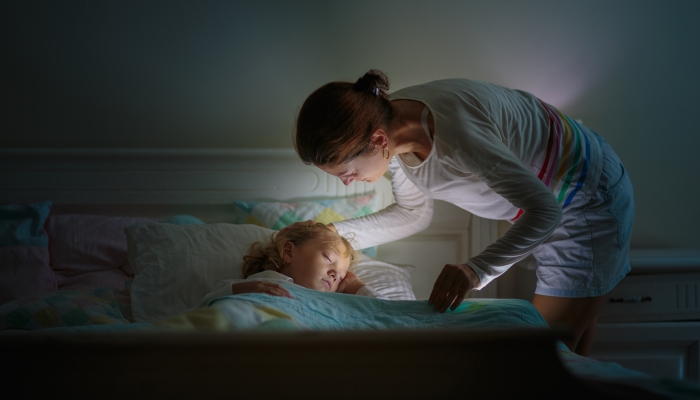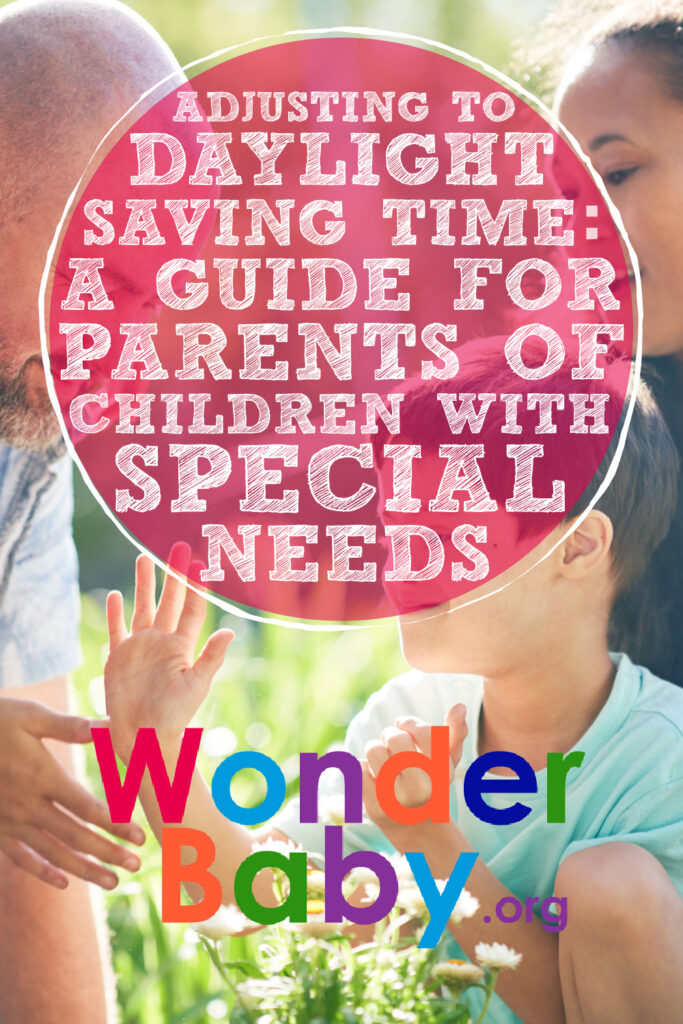Adjusting to Daylight Saving Time: A Guide for Parents of Children with Special Needs

This post may contain affiliate links; please see our terms of use for details.
- You can help your child with special needs adjust to daylight saving time by gradually moving their bedtime up in the days before the change.
- Keeping a consistent routine before, during, and after daylight saving time is beneficial for children with special needs.
- You can create a sensory-friendly environment or plan calming activities to help your child adjust to the time change.
One aspect of parenting that no one warns you about is preparing to adjust to daylight saving time. It’s amazing how one hour of the day can cause such chaos.
Unfortunately, the one-hour time shift can trigger stress and anxiety in children who depend on routines to feel comfortable and secure. Children with special needs frequently are sensitive to changes in routine, and the time shift may create additional challenges.
Adjusting to daylight savings for special needs children can be tricky, but there are ways to make the process easier for everyone.
How Daylight Savings Affects Children with Special Needs

The one-hour change may seem small, but it can disrupt the routines and internal clocks many children rely on for stability and comfort. I know it takes me several days to feel like I’m back on schedule, and I’m an adult!
If you have a child with autism spectrum disorder (ASD), ADHD, or sensory processing issues, even minor changes to their routine can lead to increased anxiety, sleep disruption, and behavioral challenges.
You may also notice the following effects on your child post-daylight savings:
- Impact on sleep patterns
- Increased anxiety and behavioral changes
- Challenges with sensory processing
- Difficulty adjusting to new routines
- Impact on attention and learning
The good news is that we only have to change our clocks twice a year, but staying ahead of the change can significantly impact your child’s reaction.
Preparing Your Special Needs Child for Daylight Savings

One of the most effective strategies for preparing your child with special needs for daylight saving time is to start early. To help your child adapt more smoothly, I recommend adjusting the time gradually over several nights rather than abruptly.
For example, you can put your child to bed fifteen minutes early for three or four days11. Decker, E.. Simple steps to prepare kids for daylight saving time. Nationwide Children’s Hospital. 2022. https://www.nationwidechildrens.org/family-resources-education/700childrens/2022/03/prepare-kids-daylight-saving-time before the change.
If you choose this method, changing every part of your routine is important to maintain consistency. For example, if you eat dinner at 6:00, switch it to 5:45 the first night, and so forth.
You may also have to make environmental adjustments, like using blackout curtains so your child doesn’t think it’s still daytime. If you get to the night before the time changes and forget it’s happening, don’t panic. (It happens to the best of us!)
I recommend keeping your kids outside as much as possible to help burn some energy and encourage a good night’s sleep.
Since some children with special needs respond well to visual cues, using a visual schedule that includes the new bedtime and morning routine is also a good idea. I like the Kids Calendar Visual Schedule because it’s easy to adjust and clearly shows what your kids can expect each day.
- Boost Key Life Skills – A3-sized weekly visual calendar. Clearly shows the week ahead at a glance. Offers a predictable and reassuring structure. Perfect for visual learners who need to know what is happening each day, or for those who need support to stay organized.
- Simple Visual Layout – One column per day. A simple yet effective way to keep track of their daily schedule – without overwhelming the person with too much information. Promotes independence in a way that’s accessible and inclusive.
- Expertly Designed – 24 x genuine Picture Communication Symbols (PCS). Designed by experts specifically for autistic children and those with ASD/ADHD. Used by millions globally for over 30 years. Probably already familiar to your child from school or therapy. Compatible with PECS cards.
- Sturdy And Practical – Premium plastic material. Waterproof, highly durable and easy to clean – perfect for an autism household! Will not split, rip or easily crease like laminated paper or cardstock. Will last for years.
Transitioning to Daylight Saving Time
The transition to daylight saving time will vary depending on your child’s age. For example, it will be more challenging for an infant to adjust to a time change than for a teenager. However, regardless of age, it’s important to help with the transition process.
You can talk your child through the transition using simple language or social stories. For example, you can explain to your child that in the fall, the clocks change, which means bedtime comes a little earlier than before.
I recommend using reassuring language when explaining daylight saving time so your child doesn’t worry. For example, you could say, “Even though the time is changing, we still have our regular routine, and mommy (or daddy) is here to help.”
I also try to monitor my kids’ sleep patterns to ensure they get enough sleep. For example, when they were younger, I’d adjust their naps if they were having difficulty falling asleep at the regular time.
Post-Transition Strategies

You’ve made it past the big day—now what? One of the best things you can do for your child is to reinforce consistent routines. Regular routines help provide a sense of predictability, which can help reduce anxiety throughout the process.
Remember, a sleep training regression may occur during daylight saving time, but it’s important to stick to your schedule for consistency.
Here are a few strategies for post-daylight saving time:
- Be patient and flexible. It may take several weeks for your child to adjust to the time change, so it’s essential to practice patience and allow extra time for sleep if needed. (Remember, this will pass!)
- Plan calming evening activities. As your child adjusts to the new time, encourage activities to help them wind down while avoiding stimulating activities like bright screens.
- Create a sensory-friendly environment. I opt for black-out curtains to help make bedtime more manageable and to block out the early morning sun. A sensory-friendly environment can also help you learn how to deal with sensory overload.
- Stick to a consistent routine. Consistency is key for children with special needs, so it’s vital you stick to a routine that mimics what you did before the time change.
Seek Support if Needed

If your child is experiencing ongoing difficulty adjusting to daylight saving time, remember you aren’t alone. But that doesn’t change the challenge you are going through.
Sleep is vital for children, and if you don’t think your child is getting sufficient sleep, it may be time to turn to professionals who can provide guidance tailored to your child’s needs. A 2015 study by Media et al. found that daylight saving time adversely affected sleep and vigilance22. Medina, D., Ebben, M., Milrad, S., Atkinson, B., & Krieger, A. C.. Adverse effects of Daylight Saving Time on adolescents’ sleep and vigilance. Journal of Clinical Sleep Medicine. 2015;11(08), 879–884. https://doi.org/10.5664/jcsm.4938 in high school students, resulting in increased daytime sleepiness.
Generally, children don’t learn as much when they’re tired. (Of course, there are exceptions to everything.)
You may also find it helpful to speak to other parents who have children with similar needs for practice tips, emotional support, and encouragement.
FAQs
Can daylight saving time changes cause anxiety in children with ADHD?
Yes, daylight saving time can cause anxiety in children with ADHD. Children thrive on routine and structure, and when there’s a shift, it can disrupt their sleep pattern. Unfortunately, sleep disturbances cause a poor quality of sleep, which can affect children with ADHD.
To help prevent anxiety, it’s best to gradually adjust your child’s schedule leading up to the time change.
Are there any apps that might help my child adjust to daylight savings?
Yes, there are several apps to help your child adjust to daylight savings, including:
I recommend doing a free trial before committing to a subscription so you can see whether it’s the right fit for your child.
When should I start preparing my child for the time change?
You’ll want to adjust your child’s routine several days to a week before daylight saving time begins. You can gradually move their bedtime and wake-up time toward the new schedule by 10–15 minutes daily. A slow adjustment helps their body adjust naturally.
References
- Decker, E. (2022, March 1). Simple steps to prepare kids for daylight saving time. Nationwide Children’s Hospital. https://www.nationwidechildrens.org/family-resources-education/700childrens/2022/03/prepare-kids-daylight-saving-time
- Medina, D., Ebben, M., Milrad, S., Atkinson, B., & Krieger, A. C. (2015). Adverse effects of Daylight Saving Time on adolescents’ sleep and vigilance. Journal of Clinical Sleep Medicine, 11(08), 879–884. https://doi.org/10.5664/jcsm.4938

Related Posts

Eye Conditions and Syndromes, Visual Impairment
Neuralink Announces Plans to Restore Sight to the Blind with Brain Chip
Elon Musk’s company Neuralink has announced plans to begin human trials of its new “Blindsight” brain chip by the end of 2025.

Special Needs
5 Spring Cleaning Tips for Families of Children with Disabilities
Spring cleaning is an opportunity to create a more accessible, organized, and supportive space for your child with disabilities. Declutter, deep clean, and refresh!

Visual Impairment
The Gift of Understanding: How a Young Child Helps His Blind Father Navigate Life
When a parent is blind, it’s natural for people to wonder how their sighted child will adapt. Will they struggle to understand their parent’s needs? Will they feel burdened by...
